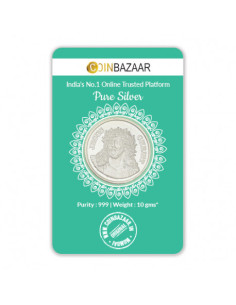Exclusive Deals & Trending Items
Ever wondered why global gold ownership matters so much to national economies? The World Gold Council says all mined gold adds up to 190,040 metric tons in 2019. This gives us a big picture of gold reserves by country.
Central banks worldwide keep gold as a reserve. Knowing about these reserves can teach us a lot about the global economy. As you learn about gold reserves, you’ll see how important this metal is for national economies.
Key Takeaways
- Central banks hold gold as a reserve asset to diversify their reserves.
- The total gold reserves held by central banks amount to thousands of metric tons.
- Gold plays a crucial role in national economies, influencing economic stability.
- The global gold market is affected by various economic and geopolitical factors.
- Understanding gold reserves can provide insights into a country’s economic health.
The Global Significance of Gold Reserves
Gold reserves are key in global economics. They are vital for central banks’ strategies. Gold has been a mainstay of national economies for centuries.
Gold is a crucial part of central bank reserves. It’s safe, liquid, and has good returns.


Historical Importance of Gold in National Economies
Gold has always been a safe-haven asset. It helps stabilize economies during tough times. Its value holds steady over time, making it a reliable wealth store.
Countries have built up gold reserves over the years. They often do this from trade surpluses or to back their currencies. The intrinsic value of gold makes it widely accepted in international trade and finance.
Modern Role of Gold in Central Bank Strategies
In today’s world, gold is still crucial for central banks. They hold gold alongside other assets like foreign currencies. The diversification benefits of gold are especially valued. It moves differently than other assets, which helps reduce risk.
Gold also acts as a hedge against inflation and currency devaluation. It’s key for a nation’s economic stability and security. The biggest gold holders manage their reserves carefully as part of their economic plans.
Understanding Central Bank Gold Reserves
Have you ever thought about how central banks handle their gold? They play a key role in managing a country’s gold reserves. These reserves are crucial for a nation’s economy.
What Constitutes Official Gold Holdings
Official gold holdings are the gold reserves kept by central banks. They store this gold in vaults. It helps back the currency and keeps the financial system stable.
How Central Banks Manage Their Gold Assets
Central banks use different strategies to manage their gold. They do gold leasing and swaps. Gold leasing means lending gold to others. Gold swaps involve exchanging gold for other assets.


Measuring and Reporting Standards
The International Monetary Fund (IMF) sets rules for measuring and reporting gold reserves. Central banks report their gold to the IMF. The IMF then shares this information. This helps us see how gold is spread across gold-rich countries.
Understanding central bank gold reserves is key to global finance. Knowing how they manage gold helps us see gold’s role in national economies. It also shows how it impacts gold reserves by country.
Top Gold Holding Countries in 2023
2023’s gold reserve leaders might surprise you. The global gold reserve scene is key to national economic plans. It acts as a safety net during economic ups and downs.
Current Global Rankings by Tonnage
In 2023, the United States leads in gold reserves, followed by Germany, Italy, France, and Russia. The U.S. has over 8,000 tons of gold, as a recent report shows:
“The U.S. gold reserve stands at approximately 8,133.5 tons, valued at around $200 billion.”
These countries’ dominance is not just about their economic power. It also shows their historical and strategic views on gold reserves.
Rankings by Percentage of National Reserves
Looking at gold reserves as a percentage of national reserves, we see a different picture. Italy and France have a big chunk of their reserves in gold. This shows their commitment to traditional assets. For example, Italy’s gold reserves are a big part of its total reserves, showing its cautious financial approach.
Recent Changes in the Hierarchy
Recently, the global gold reserve hierarchy has changed. Russia, for instance, has been boosting its gold reserves, moving up the ranks. This is part of a plan to diversify its reserves and lessen its US dollar dependence. As central banks adjust their reserve compositions, the global gold market stays dynamic and changing.
The current state of global gold reserves shows both history and modern economic strategies. As nations face economic challenges, their gold reserves play a crucial role in their financial stability.
United States: The World’s Largest Gold Reserve
The U.S. holds over 8,000 tons of gold, making it the world’s largest gold reserve. It’s known as one of the largest holders of gold. Its gold reserve is key to the global economy.
Fort Knox and Beyond: Where America Stores Its Gold
The U.S. gold reserve is mainly kept in places like Fort Knox, Kentucky. Fort Knox is famous for its top-notch security. Other places like the Philadelphia Mint and the West Point Bullion Depository also store gold.
Historical Development of US Gold Reserves
The history of U.S. gold reserves is tied to its monetary policies. Knowing this history helps us understand today’s gold holdings.
The Gold Standard Era
In the gold standard era, the U.S. dollar’s value was tied to gold. The amount of gold in reserve was key for backing the currency. This era greatly influenced the U.S. economy and gold reserve policies.
Post-Bretton Woods Strategy
The fall of the Bretton Woods system in the early 1970s changed U.S. gold reserve policies. The U.S. left the gold standard, and gold’s role in the monetary system changed. Today, the U.S. gold reserve symbolizes economic strength and stability, not just currency backing.
The United States remains a top gold holding country. Its gold reserves are crucial for its economic strategy. Managing and storing these reserves is vital for the country’s economic stability and global influence.
Germany: Europe’s Gold Powerhouse
Germany’s gold reserves are a source of national pride and a key economic asset. As a top country with gold reserves, Germany’s financial stability is greatly enhanced by its gold.
Repatriation Efforts and Current Holdings
Germany has been working hard to bring its gold back home. This move has caught a lot of attention. As of the latest reports, Germany has brought back a big part of its gold.
This action has increased trust in Germany’s gold-rich economy.
The amount of gold Germany holds now shows its dedication to a strong financial safety net. This effort has boosted confidence in Germany’s economic management.
Strategic Importance in the Eurozone
Germany’s gold reserves are key for the Eurozone’s stability and security. As a leading gold holding nation, Germany’s financial choices affect Europe.
- Enhancing Eurozone stability
- Influencing monetary policies
- Serving as a reserve currency anchor
German Public Sentiment Toward Gold Reserves
The German public sees gold reserves as a sign of economic wisdom and national wealth. This view is deeply connected to Germany’s history and culture. Gold is seen as a safe asset.
Knowing this public feeling is important for policymakers. They need to understand it when managing national reserves.
Italy and France: Mediterranean Gold Giants
Italy and France stand out as top gold holders in the Mediterranean. They have large gold reserves, showing their deep history and economic strategies. These reserves are key to their financial health.
Italy’s Historical Gold Accumulation
Italy has a long history of collecting gold. Its central bank, the Banca d’Italia, manages these reserves. They are vital for Italy’s financial stability.
Italy’s gold reserves have stayed steady, with some changes due to the economy. They are seen as a safe asset, helping during economic ups and downs.
France’s Gold Reserve Policies
France is a big player in gold within the Eurozone. The Banque de France oversees France’s gold, which is among the largest globally. France looks at gold reserves for long-term financial stability.
France has moved some gold back to its country, showing its commitment to asset security. This move is part of a bigger plan to keep its finances strong against global economic issues.
Impact of EU Membership on Reserve Strategies
Italy and France, as EU and Eurozone members, adjust their gold strategies based on EU policies and the economy. The euro’s value and Eurozone stability influence their decisions.
Being in the EU helps these countries manage their gold reserves together. Yet, they also follow their own economic goals.
Russia and China: Emerging Gold Superpowers
Russia and China are changing the game in gold reserves. You might wonder how they’re making their mark. Let’s explore their plans and what it means for the world’s economy.
Russia’s Rapid Gold Acquisition Strategy
Russia is quickly growing its gold reserves, becoming a top gold holding country. Its central bank has been buying gold fast, growing its gold a lot.
This move is part of a bigger plan to diversify its reserves. Russia wants to lessen its US dollar dependence. By buying more gold, it’s boosting its financial strength and global gold ownership.
China’s Quiet Gold Reserve Expansion
China is quietly growing its gold reserves. Its central bank has been steadily buying gold, making it a leading gold holding nation. This is a strategic move to improve China’s economic stability.
De-dollarization Efforts Through Gold
Russia and China are using gold to reduce their US dollar reliance. By growing their gold, they’re promoting their own currencies. This shift is big for global gold ownership and future international trade.
Geopolitical Implications of Their Gold Holdings
The growing gold reserves of Russia and China have big geopolitical implications. As they grow in the global gold market, they’re gaining more financial influence. This is something to watch, as it could change global economic power dynamics.
| Country | Gold Reserves (Tons) | Percentage of Total Reserves |
|---|---|---|
| Russia | 2,300 | 22% |
| China | 2,168 | 3.5% |
As shown, Russia and China are becoming key players in the global gold market. Their gold strategies are affecting their economies and the broader top gold holding countries and leading gold holding nations landscape.
Switzerland: Banking Haven and Gold Vault
Switzerland is known for its gold reserves and role in global gold trading. Its banking secrecy has drawn financial assets and made it a key gold hub.
The Swiss Approach to Gold Reserves
The Swiss National Bank (SNB) holds a lot of gold. Switzerland is among the top gold holding countries. The SNB’s gold is a big part of its assets, showing Switzerland’s commitment to stability.
Role in International Gold Trading
Switzerland plays a big part in global gold trading. Many gold deals happen through Swiss banks and platforms. Its reputation for secrecy and stability draws gold traders from gold-rich countries.
Swiss Referendum on Gold Reserves
A referendum in Switzerland focused on the SNB’s gold. It didn’t pass, but showed people care about Switzerland’s gold. It’s a big deal for the country.
| Country | Gold Reserves (Tons) | Percentage of Total Reserves |
|---|---|---|
| Switzerland | 1,040 | 5.4% |
| United States | 8,133.5 | 73.4% |
| Germany | 3,363 | 69.5% |
Switzerland’s gold reserves are important for its economy and stability. Its management of gold and role in global trading make it a major player among countries with most gold reserves.
India’s Position Among Top Gold Holding Countries
India is known for its rich gold history. It’s a big player in the global economy. Gold reserves in India are tied to both economic strategy and cultural practices.
Historical Evolution of India’s Gold Reserves
India’s gold reserves have a long and interesting history. Gold has always been a key savings and investment choice for Indians. The Reserve Bank of India (RBI) oversees the country’s gold, with reserves changing due to economic factors.
Cultural Significance of Gold in India
Gold is very important in Indian culture. It represents wealth, luck, and marriage. People buy gold for both investment and cultural reasons.
Private Gold Holdings vs. Official Reserves
While the RBI manages official gold, private households and institutions hold a lot more. Private gold is worth much more than official reserves. This shows how much Indians love gold.
- Private gold holdings are estimated to be several times larger than the official reserves.
- Gold is often held in the form of jewelry and coins.
- The RBI’s official reserves are a fraction of the total gold held in the country.
Recent Reserve Management Strategies
The RBI has been working hard to manage India’s gold reserves. They aim to get better returns and keep the gold safe.
RBI’s Gold Monetization Schemes
The RBI has launched gold monetization schemes. These plans aim to get idle gold into the economy. This helps reduce gold imports and boosts foreign exchange.
As a leading gold holding nation, India’s gold reserve management is watched closely. Its place among the top countries with gold reserves shows its big role in the global gold market.
Japan and Other Asian Gold Holders
The gold reserve strategies of Japan and other Asian countries offer valuable insights into their economic policies. As you explore the global gold market, understanding the approaches of these nations can provide a broader perspective on the significance of gold reserves.
Japan’s Conservative Gold Reserve Policy
Japan has always been careful with its gold reserves. Unlike some other major economies, Japan hasn’t changed its gold holdings much. As of recent data, Japan holds a lot of gold, but its gold reserves are a small part of its total reserves.
You might wonder why Japan is so cautious. The reasons are complex, including a focus on other investments and a cautious approach to changing its reserves.
South Korea’s Growing Interest in Gold
In contrast, South Korea has been adding to its gold reserves. This shows a growing interest in diversifying its reserve assets. South Korea’s strategy is part of a broader trend among some Asian nations to strengthen their gold holdings.
Key factors driving South Korea’s gold acquisition include:
- Diversification of reserve assets
- Economic stability
- Potential for long-term value appreciation
Southeast Asian Nations’ Gold Strategies
Southeast Asian countries have different approaches to gold reserves. Some are increasing their gold holdings, while others are more cautious. The diversity in strategies reflects the different economic priorities and financial stability concerns within the region.
For example, countries like Thailand and Indonesia are interested in boosting their gold reserves. Others are more focused on other economic indicators.
Middle East and Gold: Oil-Rich Nations’ Reserves
The Middle East’s gold reserves play a big role in its economic strategy. They add to the region’s wealth, beyond just oil. Countries here have a lot of gold, making their economies more diverse.
Saudi Arabia’s Gold Holdings
Saudi Arabia is a major gold holder in the Middle East. Its gold reserves are a key part of its wealth, acting as a financial safety net. The kingdom has over 323 tons of gold, worth billions of dollars.
The Saudi Arabian Monetary Agency (SAMA) manages the gold reserves. SAMA aims for a balanced portfolio with gold, foreign currencies, and other assets. This approach helps reduce risks from oil price changes.
UAE and Qatar: Building Gold Reserves
The United Arab Emirates (UAE) and Qatar are also big in the gold market. They’re adding to their gold reserves to diversify their economies. The UAE, in particular, has seen a big increase in its gold, thanks to its growing economy and smart financial planning.
Qatar’s gold reserves are smaller but still important for its national wealth. The Qatar Central Bank manages these reserves. It ensures liquidity and stability, even when the global economy is shaky.
Relationship Between Oil Wealth and Gold Accumulation
There’s a strong link between oil wealth and gold in the Middle East. Countries with lots of oil often buy gold to diversify their wealth. Gold helps protect against inflation, currency changes, and risks linked to oil-based economies.
- Oil-rich nations use gold to diversify their reserves.
- Gold provides a hedge against economic uncertainties.
- The accumulation of gold reflects a strategic economic planning effort.
By holding gold, these countries can handle the global economy’s challenges. This ensures financial stability and security for their people.
Economic Impact of Gold Reserve Decisions
Central banks’ choices about gold reserves have big effects on the world’s financial markets. Changes in gold reserves can shake up currency stability and market trust.
Impact on Global Markets
Central banks’ moves in gold can cause price swings, affecting investor mood and market calm. For example, a big sale or buy of gold by a key bank can shake the gold market. This can then impact other goods and currencies.
“The role of gold in central banks’ reserve assets has been a topic of debate among economists and policymakers. While some argue that gold is a relic of the past, others see it as a crucial component of financial stability.”
Currency Stability and Gold Reserves
The link between gold reserves and currency stability is intricate. Gold reserves can serve as a shield against economic downturns, offering a safety net for a country’s currency. Nations with large gold reserves, like the largest holders of gold, tend to have more stable currencies.
| Country | Gold Reserves (Tons) | % of Total Reserves |
|---|---|---|
| United States | 8,133.5 | 79.1% |
| Germany | 3,363.4 | 75.6% |
| Italy | 2,451.8 | 69.4% |
Case Studies of Major Reserve Shifts
Looking at times when central banks made big changes to their gold reserves can offer insights. For instance, Germany’s move to bring back gold has had a big impact on the global gold market.
It’s key for investors and policymakers to grasp these dynamics. The leading gold holding nations play a big role in shaping the global economy through their gold reserve decisions.
Future Trends in Central Bank Gold Holdings
Central banks worldwide are looking at their gold reserves again. This is setting the stage for a new era in global gold ownership. Big changes are coming.
Predicted Shifts in the Global Gold Reserve Landscape
The global gold reserve landscape is set for big changes soon. Emerging economies are buying more gold. This could change who holds the most gold.
This trend is because these countries want to diversify their wealth. They want to not rely so much on traditional currencies.
Emerging Economies and Their Gold Acquisition Strategies
China and Russia are buying more gold. They use a mix of making gold at home and buying it from others. This is to make their economies stronger.
As these countries grow, their gold will play a bigger role in the global market.
Digital Currencies vs. Traditional Gold Reserves
The rise of digital currencies has started a debate. Some think they could replace traditional gold reserves. But gold is still seen as a safe value.
Central banks are likely to use both gold and digital assets. This way, they can benefit from both.
As the world economy changes, so will central banks’ gold reserve strategies. It’s important to understand these trends. This helps us see the future of global gold ownership and the role of gold-rich countries.
Conclusion: The Enduring Value of National Gold Reserves
Gold reserves are key to national economies, offering a safe value and protection against economic ups and downs. Countries like the United States, Germany, and Italy show gold’s importance in their economic plans.
Knowing about gold reserves around the world helps us understand the global economy better. Countries with lots of gold use different ways to handle their gold, like bringing it back home or using it to make money.
Gold’s role in national economies is clear: it brings stability and security. Looking at countries with the most gold, it’s obvious gold is a crucial part of their economic strategies. This includes the United States, Germany, and even new players like China and Russia.
As the world economy keeps changing, gold’s role in central banks will likely stay strong. You can bet that countries with lots of gold will keep managing it well. This will help keep their economies stable.





















2 Responses
Really interesting breakdown—it’s easy to overlook how much influence central bank gold reserves have on economic stability. I’d be curious to see how these holdings shift in times of geopolitical tension, especially with emerging economies increasing their gold reserves lately. Do you think this signals a broader shift away from reliance on the U.S. dollar?
It’s fascinatingGold Reserves Blog Comment how central banks use gold not just as a reserve asset, but also as a strategic tool for economic stability, especially during times of geopolitical uncertainty. I’d be curious to see how recent shifts in global politics have impacted the gold holdings of emerging economies—are they catching up to the traditional top holders?